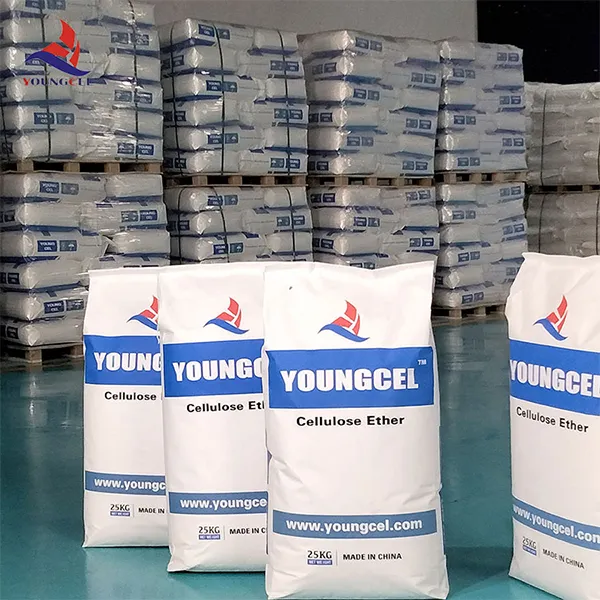Exploring the Versatility of Carboxymethyl Cellulose
Carboxymethyl cellulose (CMC) is a cellulose derivative that has found extensive application across various industries due to its unique properties and functionalities. As a water-soluble polymer, CMC has gained popularity for its ability to modify the viscosity and texture of solutions. Its synthesis involves chemically modifying cellulose, which is derived from plant biomass, making CMC a product that is both sustainable and resource-efficient.
Structural Properties of Carboxymethyl Cellulose
CMCs are formed by the introduction of carboxymethyl groups into cellulose chains, transforming the insoluble cellulose into a soluble product. The degree of substitution— the average number of hydroxy groups that have been modified—affects its properties, influencing viscosity, solubility, and the ability to form gels. CMC can exist in various forms depending on the degree of substitution and the molecular weight of the cellulose used. These variations allow for tailored applications, making CMC highly adaptable in various formulations.
Applications in the Food Industry
In the food sector, CMC serves several key roles due to its thickening, stabilizing, and emulsifying properties. It is widely used in products such as ice cream, sauces, and bakery goods. In ice cream, for instance, CMC helps maintain texture and prevents ice crystallization, which leads to a smoother mouthfeel. Its ability to retain moisture also makes it an effective ingredient in gluten-free products, enhancing their texture without the need for gluten proteins.
Moreover, CMC acts as a fat replacer, allowing manufacturers to reduce calorie content while maintaining desirable consistency and taste in low-fat food options. Its role as a stabilizer helps keep ingredients suspended in products like salad dressings and sauces, ensuring uniformity and quality over time.
Importance in Pharmaceuticals
In the pharmaceutical industry, CMC is utilized primarily as a binder and a thickening agent in tablet formulations. Its water-soluble characteristics enable the easy dispersion of active ingredients, while also controlling the release of these components in the body. This makes CMC particularly valuable in the development of sustained-release formulations where a steady release of medication is crucial.
carboxymethyl cellulose

Additionally, CMC is used in ophthalmic products, such as eye drops, due to its favorable compatibility with mucous membranes. It enhances the viscosity of the solution, providing prolonged contact time on the eye surface and improving comfort for users.
Industrial Uses Beyond Food and Pharmaceuticals
The versatility of CMC extends into various other industries, including cosmetics, personal care, and textiles. In cosmetics, CMC is frequently incorporated to stabilize emulsions and improve the texture of creams, lotions, and gels. Its ability to hold moisture and create a desirable tactile feel contributes to the sensory experience of personal care products.
In the textile industry, CMC acts as a sizing agent. It provides fabric with stiffness and helps in the application of dyes during the finishing process. Its water solubility allows for easy rinsing and removal during subsequent processing stages, enhancing the efficiency of textile production.
Environmental Considerations
As a cellulose-based product, CMC represents a more environmentally friendly alternative to synthetic polymers, especially in an era where sustainability is paramount. The renewable nature of its raw material, coupled with its biodegradability, mitigates some of the environmental concerns associated with more traditional plastic-based additives. Research is ongoing to explore more efficient production methods and improve its functionalities, ensuring that CMC remains a staple in sustainable product formulations.
Conclusion
Carboxymethyl cellulose is a remarkable and versatile compound that spans multiple industries, facilitating advancements in food science, pharmaceuticals, and beyond. Its unique properties, including thickening, stabilizing, and emulsifying abilities, offer solutions that cater to diverse consumer needs. As industries continue to prioritize sustainability, CMC’s natural origins and biodegradable properties position it as an essential ingredient for the future of formulation science. The continuous development of CMC and its derivatives will undoubtedly play a crucial role in shaping innovative product formulations and maintaining sustainable practices across multiple sectors.
-
Rdp Powder: Key Considerations for Wholesalers in the Building Materials IndustryNewsJul.08,2025
-
Key Considerations for Wholesalers: Navigating the World of Hpmc - Based ProductsNewsJul.08,2025
-
Hpmc Detergent: Key Considerations for WholesalersNewsJul.08,2025
-
Key Considerations for Wholesalers: China Hpmc For Tile Adhesive, Coating Additives, Concrete Additives, and MoreNewsJul.08,2025
-
Crucial Considerations for Wholesalers: Navigating the World of Construction MaterialsNewsJul.08,2025
-
Key Considerations for Wholesalers Sourcing Additive For Cement, Additive For Concrete, Additive For Putty from Additive Manufacturer Shijiazhuang Gaocheng District Yongfeng Cellulose Co., Ltd.NewsJul.08,2025




